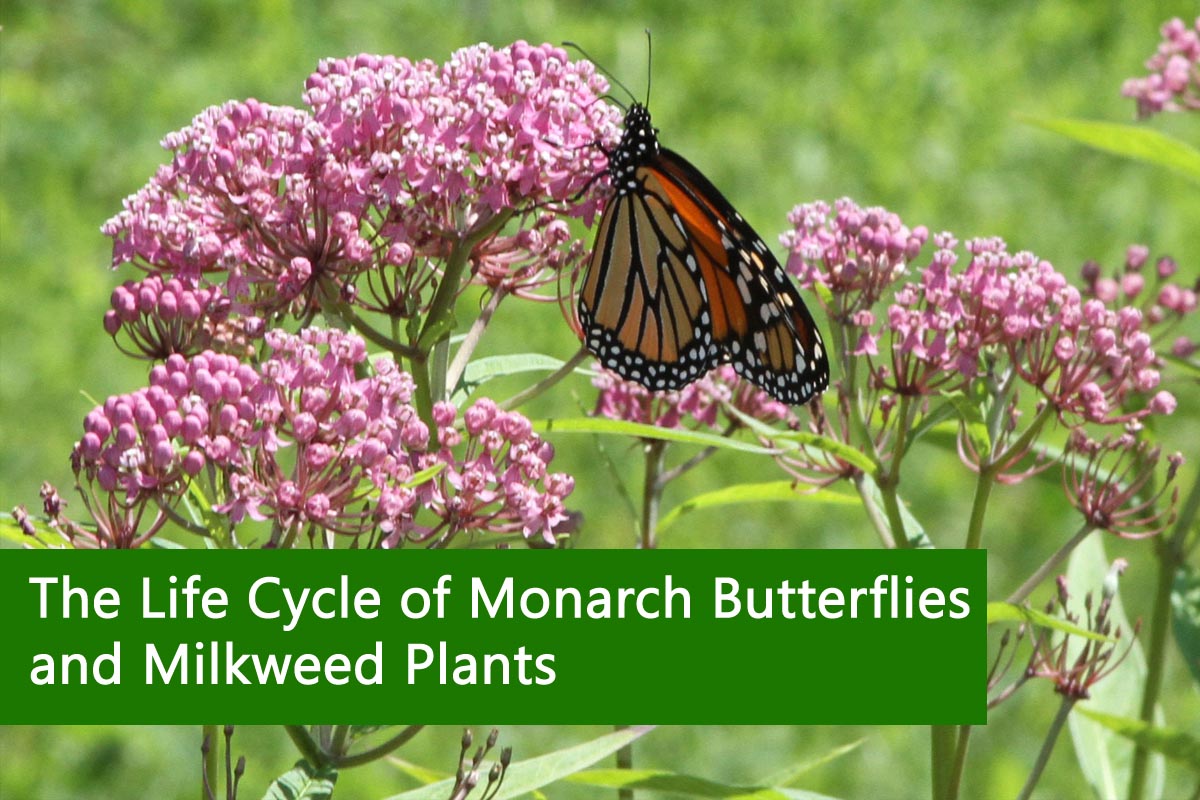
The Life Cycle of Monarch Butterflies and Milkweed Plants
The enchanting journey of a monarch butterfly, from a tiny egg to a majestic adult, is intricately intertwined with the life of a seemingly unassuming plant – the milkweed. This extraordinary relationship between the monarch and milkweed is a captivating example of nature’s interconnectedness and adaptation. In this blog, we’ll delve into the remarkable life cycle of monarch butterflies and their reliance on milkweed plants, offering a deeper understanding of this unique ecological partnership.
The Monarch Butterfly
Monarch butterflies (Danaus plexippus) are North America’s most well-known and beloved butterfly species. Their distinctive orange and black wings are instantly recognizable, and their migratory behaviour is miraculous.
Also Read This : How to Cultivate Datura at Home: A Gardener’s Guide
The Four Stages of a Monarch Butterfly’s Life
Egg: The life of a monarch butterfly begins as a tiny, spherical egg laid on the underside of a milkweed leaf. These eggs are no larger than a pinhead and are usually pale green or yellow. It takes about 3 to 5 days for the egg to hatch.
Larva (Caterpillar)
When the egg hatches, it reveals the monarch caterpillar, which is striped in black, yellow, and white. The caterpillar’s sole source of food is the milkweed plant. As it feeds on the milkweed’s leaves, it accumulates toxins, making it unpalatable to predators. The caterpillar goes through five moults, each time shedding its skin to accommodate its growing body.
Also Read This : Succulent Soil: Is Coco Peat the Perfect Choice?
Pupa (Chrysalis)
After reaching a specific size, the caterpillar forms a protective chrysalis. A remarkable transformation occurs within this chrysalis as the caterpillar’s body undergoes a complete metamorphosis. This stage lasts about 10 to 14 days.
Adult
Emerging from the chrysalis, the fully developed adult monarch butterfly is ready to take flight. It will live for several weeks, but during that time, its primary mission is to reproduce and continue the cycle.
Also Read This : Succulent Wedding Favors: Perfect Green Gifts for Your Guests
The Role of Milkweed Plants
Milkweed (genus Asclepias) plays a pivotal role in the life cycle of monarch butterflies. It’s the sole host plant for monarch caterpillars. Monarchs lay their eggs on milkweed leaves, providing the caterpillars with their first and most crucial source of nourishment. While the caterpillars devour the milkweed’s foliage, they also accumulate toxic compounds known as cardenolides, which serve as a defence mechanism.
The relationship between monarchs and milkweed is a delicate and essential one. The milkweed plants support the survival of monarch caterpillars, while in return, the caterpillars play a crucial role in pollinating milkweed flowers. This intricate dance of mutual dependence between the butterfly and the plant showcases the wonders of coevolution in nature.
Also Read This : Cleanse Your Indoor Air with These Top Air-Purifying Plants
Migration and Conservation
Monarch butterflies are well-known for their astonishing long-distance migration. Each year, they travel thousands of miles from their breeding grounds in North America to their wintering sites in Mexico. This incredible journey highlights the importance of maintaining a healthy and abundant milkweed population throughout their migration route.
However, the decline in milkweed habitat due to habitat loss, herbicide use, and climate change has posed a significant threat to the monarch butterfly population. Conservation efforts have been underway to protect and restore milkweed habitats and raise awareness about the importance of milkweed in monarch survival.
Also Read This : Growing Generations: A Guide to Swiss Cheese Plant Propagation
Butterfly Habitat, Conservation
Creating and preserving butterfly habitats is crucial for conserving these delicate creatures. Many butterfly species, such as the iconic monarch, rely on specific plants like milkweed for reproduction and nourishment. By cultivating these host plants and nectar-rich flowers, we provide essential resources for butterflies. Additionally, reducing pesticide use and maintaining natural areas helps safeguard their habitats. Conservation efforts, like preserving migration corridors and educating the public about the importance of butterflies in pollination and biodiversity, play a pivotal role. Butterfly habitats are beautiful and integral in maintaining healthy ecosystems and preserving these enchanting insects for future generations.
Also Read This : Monstera Deliciosa: The Marvelous Swiss Cheese Plant
The life cycle of monarch butterflies and their dependence on milkweed plants is a testament to the intricate web of life in the natural world. It’s a story of survival, adaptation, and the beauty of coevolution. By understanding and appreciating this relationship, we can better appreciate the fragility and interconnectedness of our ecosystems and take steps to protect and preserve them for generations to come.
Also Read This : Straw Mulch: Unveiling Its Role and Benefits in Farming and Gardening




